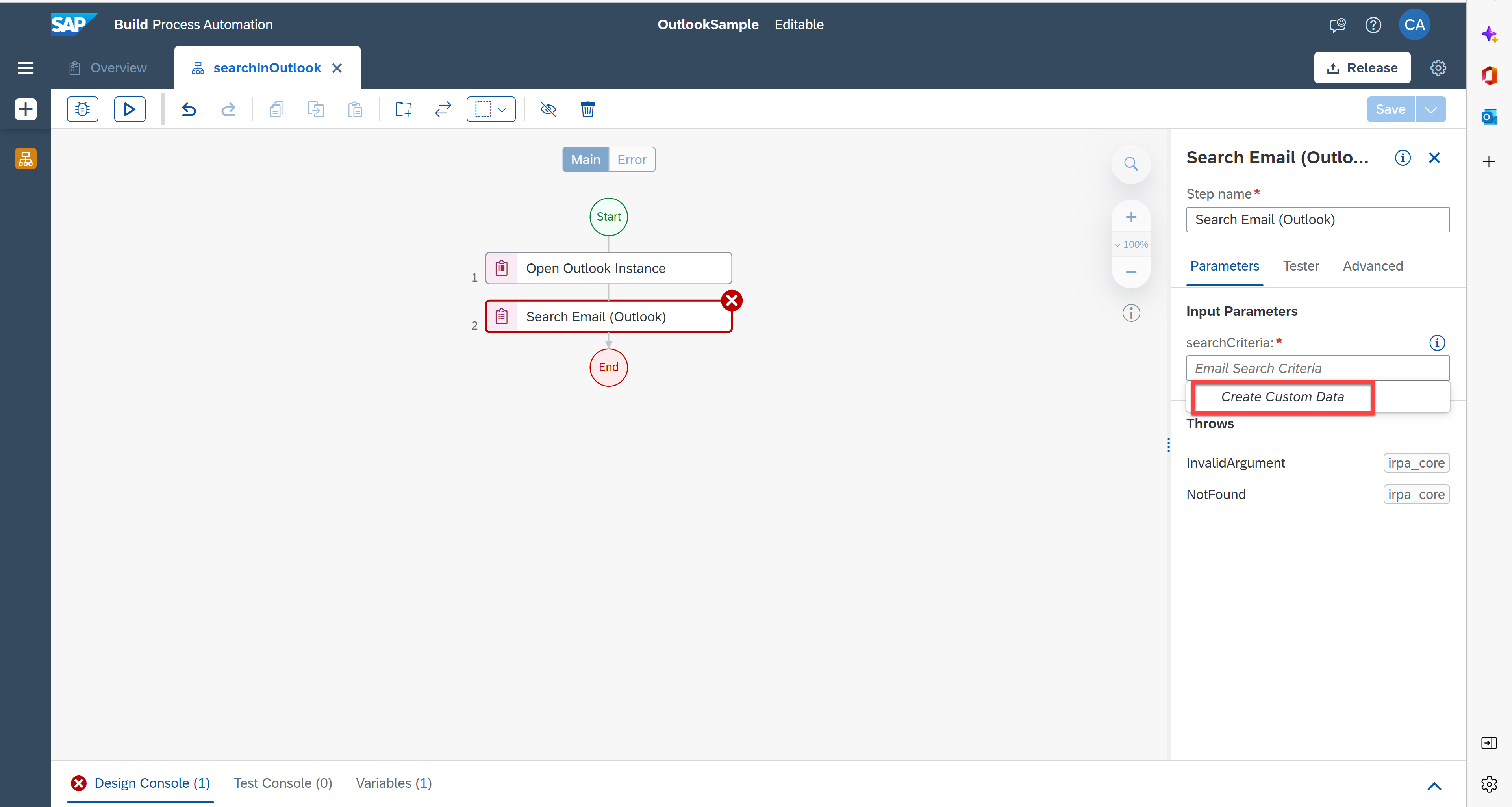Build Your First Automation Using Outlook SDK of SAP Build Process Automation
Beginner
20 min.
In this tutorial, you will be developing a basic automation using Outlook SDK of SAP Build Process Automation. In the end, by using the activities in Outlook SDK, you will learn how to search outlook inbox or a specific email folder and download any attachments found in the email to a specific local folder.
You will learn
- How to use Outlook SDK of SAP Build Process Automation to search the given email
Prerequisites
- Subscribe to SAP Build Process Automation
- Install and Setup the Desktop Agent
- Basic understanding of SAP Process Automation. You may review the below missions:
SAP Build Process Automation has native integration to several Microsoft Office products including Outlook and Excel SDK. In this Tutorial, you will explore how to use Outlook SDK to your automations.


















